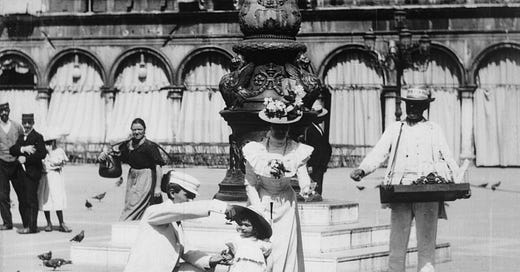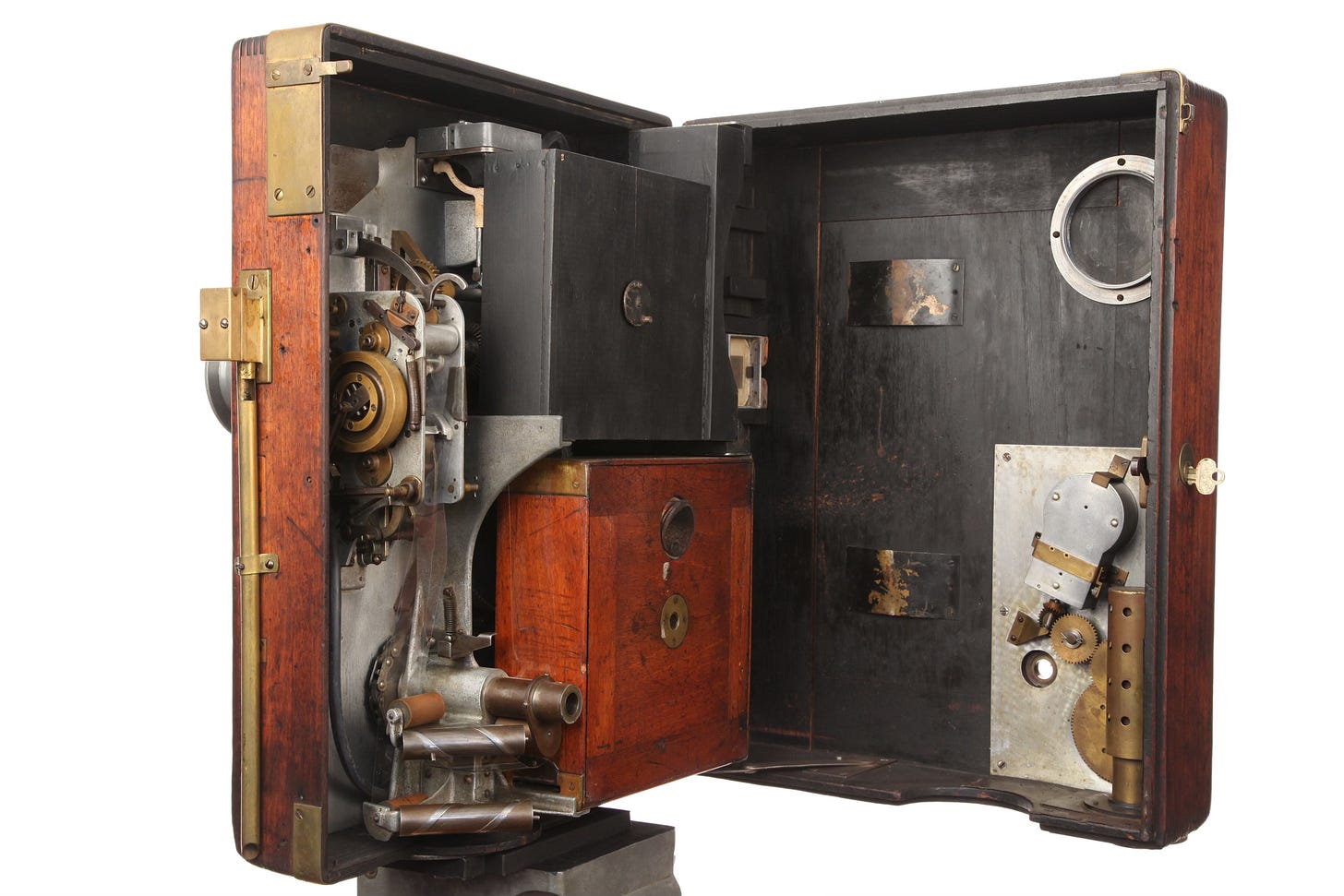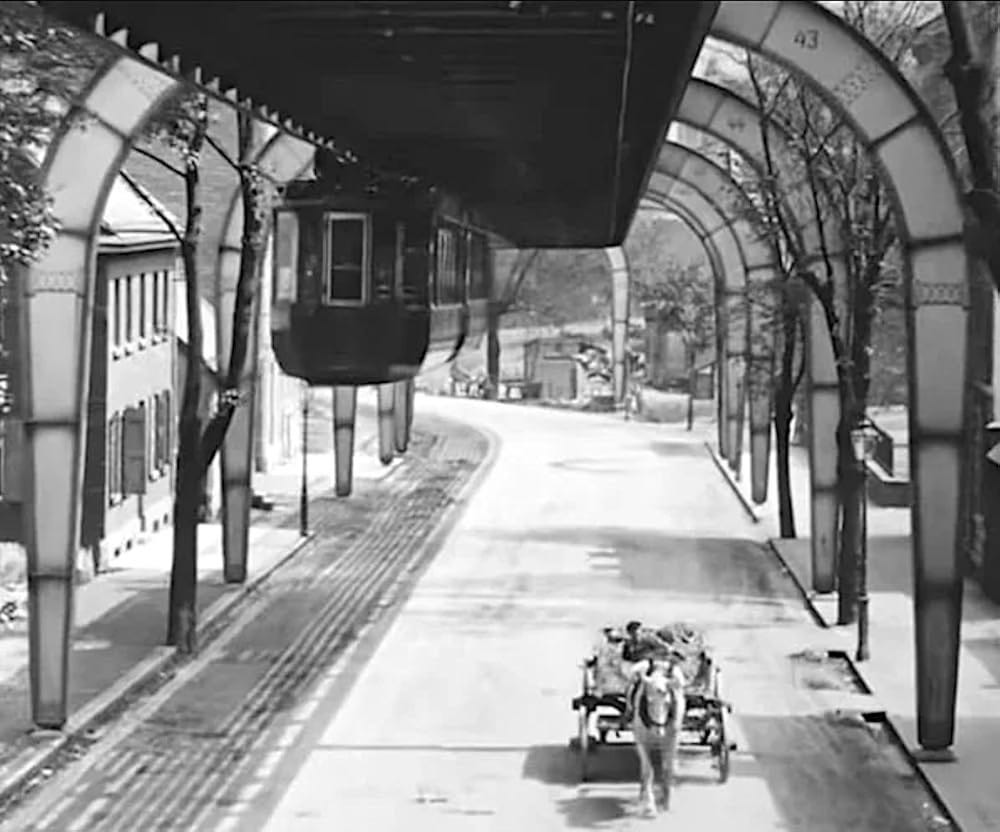UNESCO Announces Rare 68mm Silent Films Added to International Memory of the World Register
Pictures That Move #16
In a strange twist of fate, this week’s Pictures That Move was intended to look at one of my absolute favourite discoveries in recent years: a 1902 short known as The Flying Train, which was made in the town of Wuppertal (that’s in Germany), as part of the American Mutoscope and Biograph Company’s early forays into documenting various things around the world in roving reporter fashion. They were not narrative films, but what you’d call early documentaries, or as the French called them “Actualités”.
Photos of the camera exterior and interior below:
The Flying Train is extraordinary. And especially so because it was filmed in glistening 68mm, giving a clarity and vividness to the imagery which is positively mind-blowing. This was achieved because the film stock didn’t have perforations, the picture therefore fills the entire width of the stock.
Yes, they were experimenting with large celluloid formats, resolutions, depth of field and cameras even back then! 35mm eventually became the industry standard, but like I say, they were experimenting, experimenting, experimenting. Now, the camera was far from perfect and weighed a ton.
The Flying Train is available on YouTube on the MoMA channel, which is where I discovered it at random, and a load of other amazing shorts, and I highly recommend you check it out.
The Flying Train is a suspension monorail (sings *monorail … monorail … monorail!* - Simpsons ref) but with the rail fixed to the structure’s roof, so it gives the appearance of, with the camera shooting from the front of the carriage, flying through the air. The monorail moves 13km around the town of Wuppertal, and with such gliding grace. And it’s still working to this very day. If engineering is your thing, read about it here.
So I was all set to do a little write-up on this two minute wonder ride through provincial Germany, when I received a press release from the British Film Institute (I have written for their website over the years, but not on the subject of silent film) regarding the UNESCO’s International Memory of the World register. Fortuitous stuff.
The Mutoscope and Biograph films in the archives of the BFI, Museum of Modern Art (New York) and Eyemuseum (Amsterdam) and Centre national du cinéma et de l’image animée (France), they have all been added to the UNESCO list. Formidable!
The Eyemuseum has a whopping 200 of these short slices-of-life films, the BFI houses 100, with the other two archives holding far lesser, but they are still of major importance.
The American Mutoscope and Biograph Company was setup in 1895 by a fascinating former employee of Thomas Alva Edison (1847-1931), William Kennedy-Laurie Dickson (1860-1935), and it later became incredibly renowned when they hired a jobbing actor from Kentucky named David Wark Griffith (1875-1948). The company lasted about 21 years, becoming just The Biograph Company in 1908, when it stopped making Mutoscope films, and faded entirely away by 1916 after Griffith left to pursue bigger projects. They relied on him simply too much and they hesitated making theatrical features.
It’s like I argued last week in my Florence Lawrence piece, while we call this early doors era the Primitive, what it really was: the age of discovery and people, inventors, camera operators, writers, actors and producers, they were all grappling with the new.
Cinema is a time machine. We can look into the past. The eerie paradox of the screen and time is presented to us in its stark magnificence. Think about it. Watch a clip of a street scene taken in, say, Paris in 1898. People cycle past. There’s a streetcar, a guy driving a horse and carriage, pedestrians. Some acknowledge the camera and some ignore it completely. They passed this camera for a couple of seconds and went off and lived the rest of their lives. And we in 2025, we can witness this moment, this passing moment, this moment of total insignificance, certainly in the grand scheme of things. But their lives, their city, their world, it was shot and printed and almost 130 years later we can see into the past. We can travel back in time. The people on the screen are both the living and the dead.
Now that the Mutoscope and Biograph collection has UNESCO protected status, they will be safe - fingers crossed - forever. Because the sad fact is, around 80 percent of films made prior to 1930 are lost due to celluloid deterioration instability and the fact many companies didn’t think films were worth keeping once their commercial value ran dry. Crazy, when you think about it.
In order to preserve these cinematic jewels of yesteryear, archivists, in the words of the press release I received yesterday: “techniques were developed between the archivists at BFI National Archive, Eye Filmmuseum and the specialist film laboratory, Haghefilm in the Netherlands. The restoration of these films was particularly challenging, the super-large, unperforated format had to be painstakingly scanned frame by frame, but the rewards are exceptional.”
Arike Oke, BFI Executive Director of Knowledge, Learning and Collections also was quoted: “These films are our vital window into how we used to live, and into who we were, then. They are incredibly precious, rare and delicate. The artisanship required to preserve them in the national collection is an example of the similarly precious and rare conservation skills at the BFI National Archive. We preserve and interpret these treasures of our heritage for the British public, and now thanks to this UNESCO recognition, for the whole world.”
So, yeah, this was a wonderful bit of silent film news. And unexpected.
What’s more, I’d like to point you in the direction of the BFI Player website, because they have a collection of the Mutoscope and Biograph films, The Brilliant Biograph, available for free. I highly recommend you watch them, and also check out the MoMA YouTube channel and the US Library of Congress YouTube channel also has some amazing stuff.
Until, next time! And thanks for reading.









